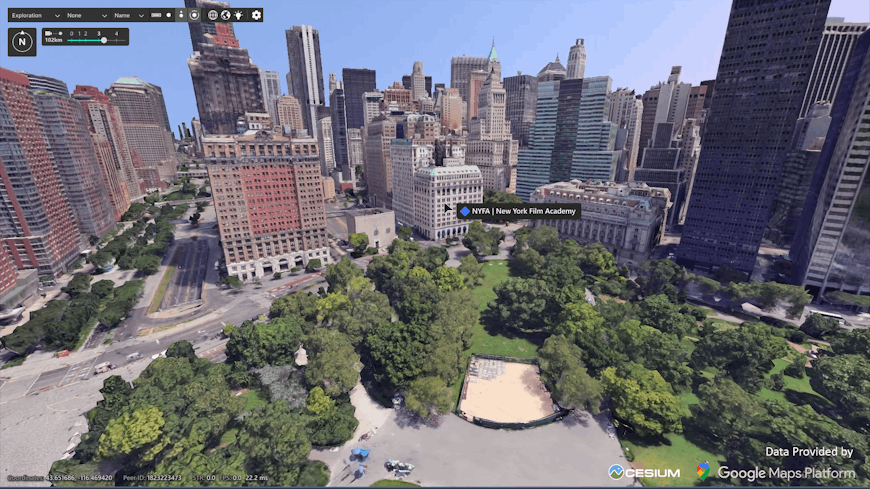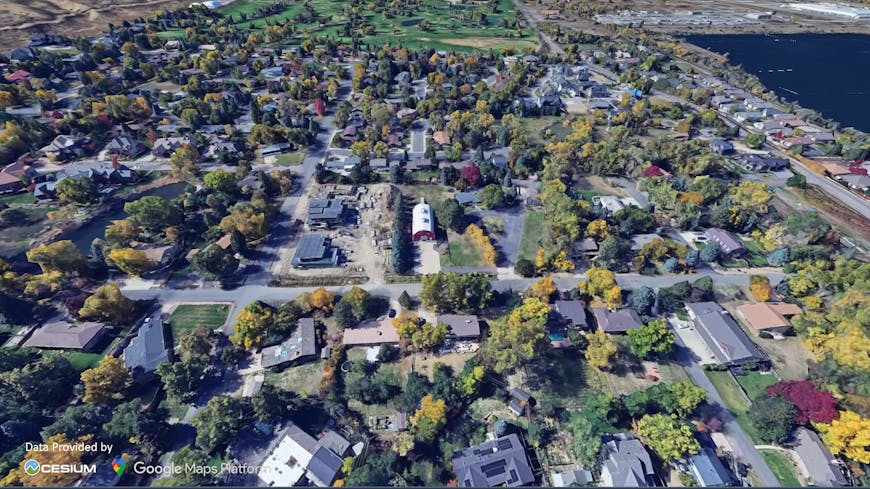Introducing 3D Tiles for Godot by Battle Road
We're excited to announce the release of 3D Tiles for Godot, an open source plugin for Godot Engine built by Battle Road through the support of a Cesium Ecosystem Grant.
The 3D Tiles for Godot plugin brings real-world 3D geospatial data to the Godot Asset Library. Courtesy Battle Road.
Godot Engine is the largest cross-platform, free, and open source game engine. The 3D Tiles for Godot plugin brings the most performant and precise 3D data to this global developer community, with a high-accuracy WGS84 globe and support for 3D Tiles. Godot users can easily integrate curated geospatial content via Cesium ion, such as terrain, imagery, and buildings, as well as Google Photorealistic 3D Tiles, along with their own data.
3D Tiles for Godot is the latest entrant in a growing ecosystem of open source applications supported by the Cesium Native library, which includes Cesium's plugins for Unreal, Unity, Omniverse, and other third-party applications. These efforts have benefited from cross-engine functional exchanges enabled by open source.
Battle Road, developer of AtomEngine, a platform for modeling and simulation at planet scale, created the open source plugin for the Godot Asset Library, available here.

New York City, New York, USA, visualized with Google Photorealistic 3D Tiles via 3D Tiles for Godot. Courtesy Battle Road.
“At Battle Road, we reap the benefits of open source software every day and we’re honored to have an opportunity to give back. Over the past few months, we’ve worked closely with Cesium and Godot—both icons of the open source community—to bring the innovative capabilities of 3D Tiles to Godot, accelerated by Cesium Native. We believe Godot is the best open source game engine out there, and with new datasets like Cesium World Terrain, Google Photorealistic 3D Tiles, and more now at your fingertips, the possibilities are endless,” said Josh Henderson, Battle Road CEO and co-founder.
“It’s collaboration and innovation from the community that build the 3D geospatial ecosystem, with openness and interoperability at the heart of the work. Battle Road’s contribution enables Godot’s global developer community to build projects that bridge the built and natural environments and efficiently stream massive datasets using 3D Tiles,” said Patrick Cozzi, Bentley Systems chief platform officer and Cesium founder.

Farm visualized with Google Photorealistic 3D Tiles via 3D Tiles for Godot. Courtesy Battle Road.
Take a look at Battle Road’s guide to launching 3D Tiles for Godot for your next project. The Battle Road team is committed to maintaining and updating the plugin. There is now also a category on Cesium’s community forum to interact with the plugin’s creators and with other Cesium users getting started on 3D geospatial projects in Godot.
Our goal for Cesium Ecosystem Grants has been to address common challenges and opportunities through open source contributions and game-changing collaborations within the 3D geospatial ecosystem. The 3D Tiles for Godot plugin is this vision come to life. If you have a similar idea for expanding the 3D geospatial ecosystem and enhancing interoperability, apply for a grant.
Hear from Battle Road at the 2025 Cesium Developer Conference. Register to join us in Philadelphia in June.